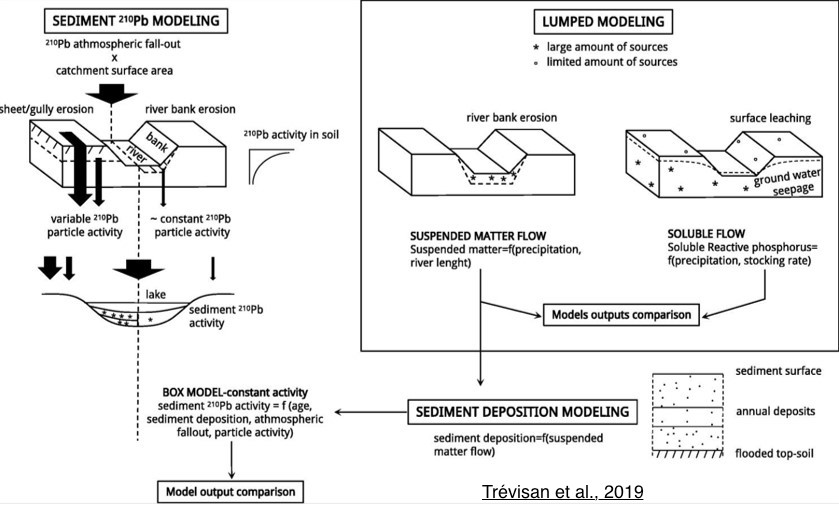TIP TOP
|
Article scientifique Trévisan D., Giguet-Covex C., Sabatier P., Quétin P., Arnaud F. Coupling indicators and lumped-parameter modeling to assess suspended matter and soluble phosphorus losses Science of the Total Environment, 2019, 650, 3027-3040. For ecological and economic issues, evaluating the environmental fate of dissolved and suspended matter in catchments and river ecosystems still remains a challenge for the preservation and management of natural resources. Models are useful tools and may help to cope with this challenge, and especially to define the relationships between the state of natural systems and land and river management/uses. As it is difficult - even impossible - to carry out experiments on natural systems such as catchments, models are also useful to test hypotheses about the underlying processes acting on dissolved and suspended losses. We propose an innovative approach to achieve these objectives. By coupling environmental indicators and lumped modeling, this study aims to develop a conceptual and general framework to evaluate and test the functions that drive particulate and dissolved matter flows at the catchment and landscape scales, while respecting the constraint of parsimony for the number of model parameters. Calculated suspended matter (SM) and soluble reactive phosphorus (SRP) losses agreed well with field data. 210Pbex (excess Pb) activities in core sediments were also compared to those of 210Pbex calculated from the filling of the reservoir. Our models are parsimonious and this does not impair their accuracy in reproducing recorded outflows or evaluating the sedimentation processes associated to particulate outflows. Considering the adequacy of our models, we validate the hypothesis that river bank erosion and water table behavior are the driving processes that govern losses of particulate and solute forms of P, in the studied extensive agriculture conditions.Keywords: Lumped-parameter modeling, Catchment, Transfer function, Phosphorus losses, Erosion, Sediment core A retrouver ici : https://doi.org/10.1016/j.scitotenv.2018.09.392  |